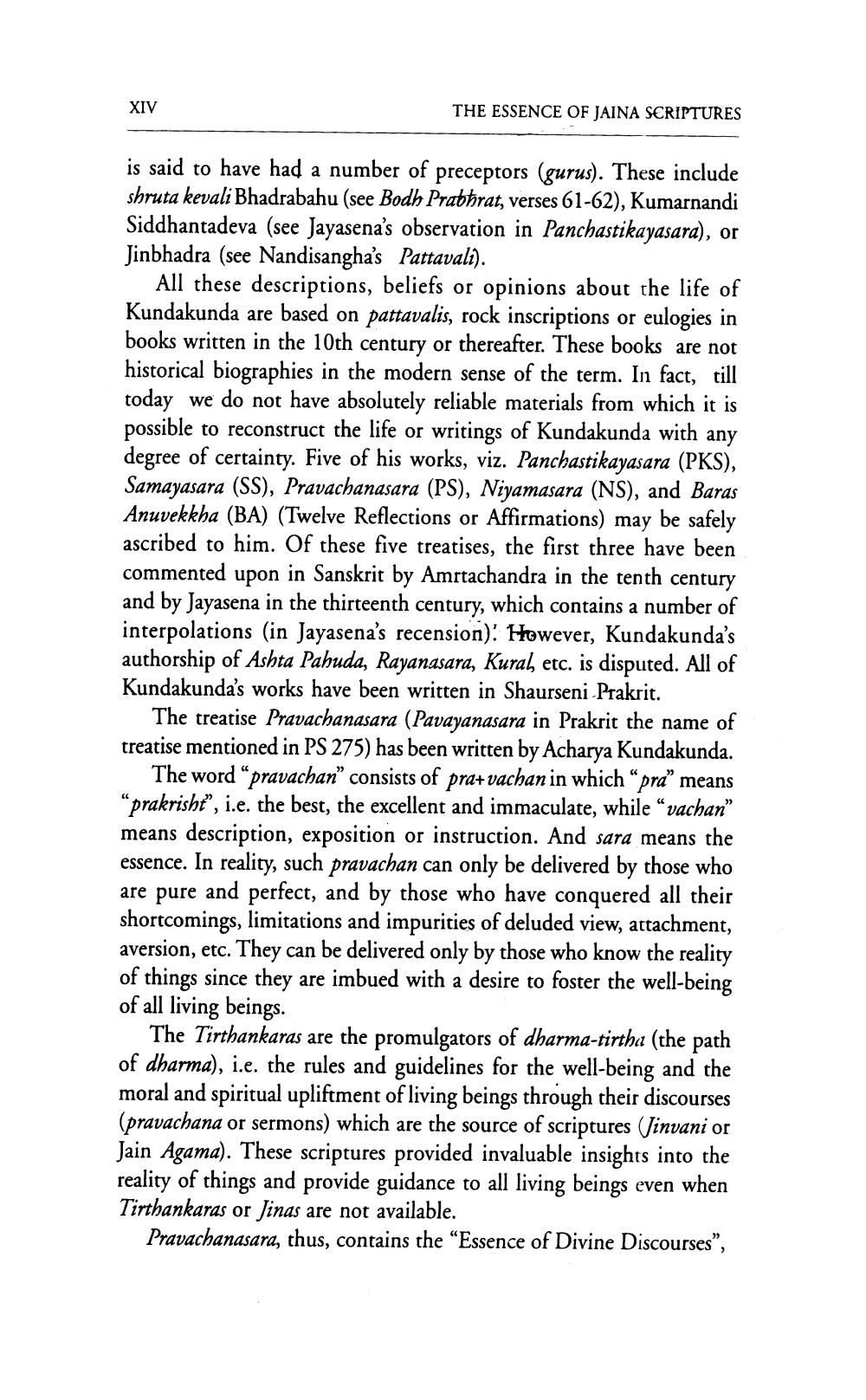________________
XIV
THE ESSENCE OF JAINA SCRIPTURES
is said to have had a number of preceptors (gurus). These include shruta kevali Bhadrabahu (see Bodh Prabhrat, verses 61-62), Kumarnandi Siddhantadeva (see Jayasena's observation in Panchastikayasara), or Jinbhadra (see Nandisangha's Pattavali).
All these descriptions, beliefs or opinions about the life of Kundakunda are based on pattavalis, rock inscriptions or eulogies in books written in the 10th century or thereafter. These books are not historical biographies in the modern sense of the term. In fact, till today we do not have absolutely reliable materials from which it is possible to reconstruct the life or writings of Kundakunda with any degree of certainty. Five of his works, viz. Panchastikayasara (PKS), Samayasara (SS), Pravachanasara (PS), Niyamasara (NS), and Baras Anuvekkha (BA) (Twelve Reflections or Affirmations may be safely ascribed to him. Of these five treatises, the first three have been commented upon in Sanskrit by Amrtachandra in the tenth century and by Jayasena in the thirteenth century, which contains a number of interpolations (in Jayasena's recension)? However, Kundakunda's authorship of Ashta Pahuda, Rayanasara, Kurah etc. is disputed. All of Kundakunda's works have been written in Shaurseni Prakrit.
The treatise Pravachanasara (Pavayanasara in Prakrit the name of treatise mentioned in PS 275) has been written by Acharya Kundakunda.
The word “pravachan” consists of pra+vachan in which“ pra” means "prakrisht”, i.e. the best, the excellent and immaculate, while “vachan" means description, exposition or instruction. And sara means the essence. In reality, such pravachan can only be delivered by those who are pure and perfect, and by those who have conquered all their shortcomings, limitations and impurities of deluded view, attachment, aversion, etc. They can be delivered only by those who know the reality of things since they are imbued with a desire to foster the well-being of all living beings.
The Tirthankaras are the promulgators of dharma-tirtha (the path of dharma), i.e. the rules and guidelines for the well-being and the moral and spiritual upliftment of living beings through their discourses (pravachana or sermons) which are the source of scriptures (Jinvani or Jain Agama). These scriptures provided invaluable insights into the reality of things and provide guidance to all living beings even when Tirthankaras or Jinas are not available.
Pravachanasara, thus, contains the “Essence of Divine Discourses”,




